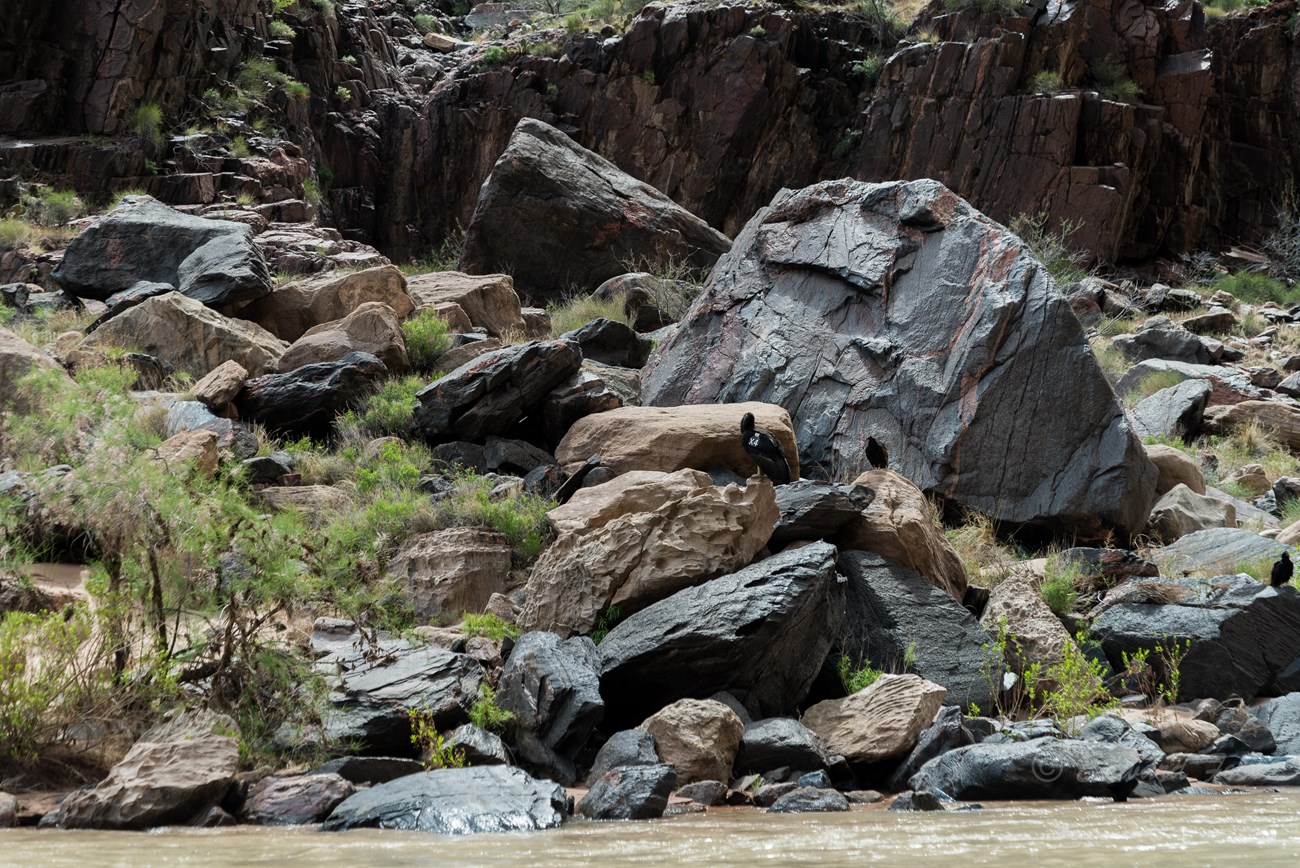Last updated: March 4, 2020
Article
SW CA Condor Update – 2020-02

NPS Photo/ Edward Foss
Condor Enthusiasts -
Please see the 2019 summary data for the Southwest (Arizona/Utah) California condor meta-population below. All condors are identified below by:WingTagNumber (StudBookID#_Sex_YearHatch). The wing tag is what you will use to identify the birds in the wild when observing them! Wild hatched chicks may only be referred to by studbook number as they may not have wing tags yet. The Studbook ID # is unique to each individual condor.
2019 December 31st SW CA Condor meta-population size: 93
For information on current free flying SW individuals view the SW Condor Gossip Chart
2019 SW Wild Hatched Chicks (5):
- Chick #997, Parents -6(296 f03) + 87(187 m98), hatched and fledged from Vermilion Cliffs National Monument, BLM lands, AZ
- Chick #999, Parents 89(389 f05) + -3(293 m03), hatched and fledged from Kaibab National Forest Lands, AZ
- Chick #1000, Parents 9(409 f06) + J3(523 m09), hatched and fledged from Zion National Park lands, UT --- 1000th individually identified condor since the start of conservation efforts in 1983!
- Chick #1001, Parents L3(593 f11) + 43(243 m01), hatched and fledged from Kaibab National Forest Lands, AZ
- Chick #1005, Parents J1(521_f09) +E3(423_m06), hatched from Grand Canyon National Park, AZ and is unconfirmed as to whether it fledged or not
2019 SW Releases to the Wild (10):
Captive breeding is conducted at the Peregrine Fund’s World Center for Birds of Prey, Los Angeles Zoo, San Diego Zoo and Safari Park and Oregon Zoo in the U.S. and Chapultepec Zoo in Mexico City, Mexico. These sites provide birds for release into the wild. All releases for the SW meta-population are conducted by the Peregrine Fund at Vermilion Cliffs National Monument.
V+ (876_f17)
V1 (885_m17)
VH (887_f17)
X7 (917_f18)
X8 (918_m18)
X6 (928_f18)
X9 (929_m18)
X0 (930_m18)
XX (947_m18)
X3 (948_m18)
2019 SW Wild Condor Deaths (5):
Lead poisoning/ toxicosis is responsible for 50 percent of all wild condor deaths from all populations where a cause of death has been determined. Condors that go missing are presumed dead after missing for more than 365 days.
30 (530_m09)
90 (790_f15)
V6 (896_?17)
X7 (917_f18)
V2 (857_m17)
Missing, presumed dead: 21(721_f134)
CA Condors were observed in 2019 near Cedar City, UT for some periods of time, mostly in the Dixie National Forest and Cedar Breaks National Monument.
SW Meta-population Supporter News:
We are also sad to announce the death of Ranger Ron Brown in February 2020 due to natural causes. Ron Brown and his partner Pat Brown, who passed away of cancer in 2014, were long time supporters of the Condor recovery program. Both rangers were dedicated to the recovery of the CA condors and they continually educated themselves and passed that knowledge on to visitors at the Grand Canyon. We will truly miss these passionate and dedicated co-workers.
Prepared by Miranda Terwilliger, Wildlife Biologist, Division of Science and Resource Management, Grand Canyon National Park (February 2020)
